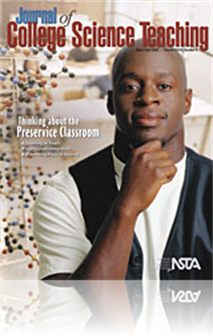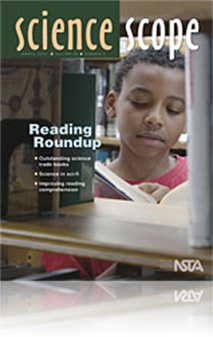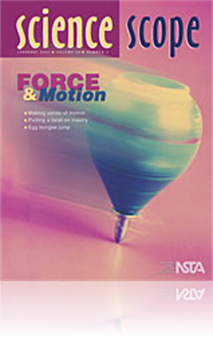All Resources
Journal Article
Editorial: Tsunamis and Other Disasters -- A Response from Scientists Who Teach
Scientists who teach have a unique opportunity and an ethical obligation to ensure that the scientific and technical basis for analyzing natural and m...
Journal Article
Favorite Demonstration: Mock Immunoprecipitation - "Who Done It?"
Many biologists have admitted that much of what is taught in biology is explained with principles of chemistry and physics. Chemistry and physics de...
Journal Article
In science, students learn about their place in the natural world. In social studies, they learn about our social systems and history. Both are vita...
Journal Article
Libros de Ciencias en Español (2005)
This article lists the current trade books in Spanish useful for young learners. Books are grouped under such categories as For the Very Young, Biolog...
Journal Article
This creative activity weaves science fiction and language arts skills into the science classroom, which can expand and enrich the science content and...
Journal Article
A multidisciplinary learning community provided environmental management students the opportunity to work with students in different classes and major...
Journal Article
Point of View: So Tell Me Again--Who's Locked in the Chinese Room?
To succeed in our classes--especially science classes--students must be physically and intellectually present most of the time. They must be able to ...
Journal Article
Science Sampler: First-class inquiry
In this scientific inquiry-based activity, students explore how variables in a first-class lever, specifically arm length, position of the fulcrum, an...
Journal Article
Ask the Experts -- February 2005
The Experts will provide the answers to your burning science questions! In this month's column, they answer the questions, What is a black hole? and C...
Journal Article
After studying linear motion and learning the basic concepts involved, (inertia, force and motion, friction), middle level students can apply their le...
Journal Article
Commentary: Professional Development and Resources for Educators in Astrobiology
In addition to catalyzing and promoting interdisciplinary research in astrobiology, the NASA Astrobiology Institute (NAI) also seeks to train the next...
Journal Article
A yearlong river study builds science-process skills and understanding of basic water quality concepts. Third-grade students set out to determine the ...
Journal Article
Science Shorts: Exploring Insect Vision
A fly is buzzing around in the kitchen. You sneak up on it with a flyswatter, but just as you get close to it, it flies away. What makes flies and ot...
Journal Article
Elementary school teachers and university researchers combine their expertise to help students construct an understanding of force—and discover some...







